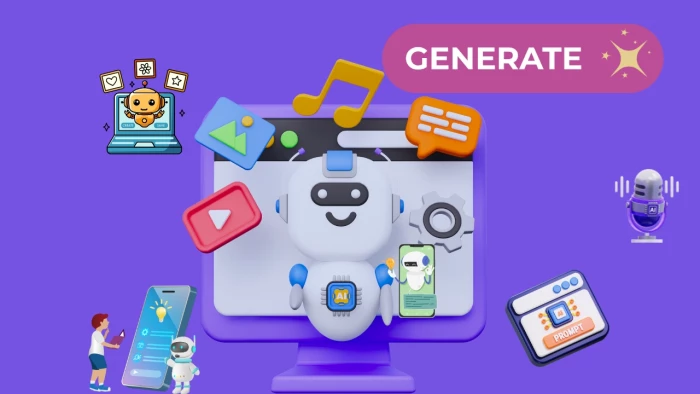

The rise of generative AI has brought a shift in how we think about creativity, originality, and production. Tools like GPT-5, MidJourney, Runway, and Stable Diffusion are no longer niche technologies—they’re mainstream engines driving innovation across art, music, film, advertising, and gaming. But what does this mean for creative professionals, and where is the industry heading?
Traditional AI has always been about automation—classifying, predicting, or analyzing data. Generative AI, however, creates. It learns patterns in massive datasets and produces new outputs: images, text, music, even video.
A designer can generate dozens of ad concepts in seconds. A filmmaker can storyboard a sequence without hiring an artist. A music producer can co-create melodies with an AI assistant. This ability to generate high-quality, original-like content at scale is what makes generative AI revolutionary.
Artists use AI to generate textures, patterns, and even complete artworks. For instance, Refik Anadol, a pioneer in AI art, created immersive exhibitions using machine learning models trained on visual archives. Sotheby’s and Christie’s now auction AI-generated works, with one piece by Obvious selling for $432,500 in 2018.
Ad agencies use tools like Canva’s AI and Adobe Firefly to accelerate campaign production. Instead of spending weeks on drafts, designers can generate variations instantly, then refine the most compelling ones. Coca-Cola, for example, used AI-generated art in its 2023 “Create Real Magic” campaign.
Musicians use platforms like AIVA, Amper Music, and Soundful to co-compose tracks. These tools don’t replace creativity—they expand it. Producers can experiment with dozens of genres and moods without needing an entire orchestra.
Streaming services experiment with AI-generated background scores tailored to user moods. Imagine listening to Spotify and having unique, on-the-fly tracks built just for you. This personalization could reshape how we consume music, much like playlists did a decade ago.
Generative AI supports scriptwriters by suggesting dialogue, plot twists, or alternate endings. OpenAI’s models are already being used by indie filmmakers to brainstorm scenes. Storyboarding, once a resource-heavy process, can now be automated with AI-powered visualization tools.
Hollywood is exploring AI for de-aging actors, creating realistic CGI environments, and even filling background scenes with AI-generated characters. Disney has already filed patents for AI-driven VFX techniques.
Generative AI enables procedural content creation at unprecedented levels. Instead of manually designing every character or map, developers use AI to build endless variations. For example, Ubisoft has tested AI for generating in-game dialogue for NPCs.
This not only speeds up development but also makes gaming worlds richer and more immersive. Imagine a role-playing game where every conversation feels unique because it’s generated in real-time.
Fashion brands use generative AI for virtual try-ons, clothing design, and trend forecasting. Startups like Cala and The Fabricant let designers create digital-only garments. In 2022, DressX reported selling over $1 million in digital fashion NFTs.
Retailers also use AI to personalize ads and recommend outfits based on customer style, shifting shopping into a more tailored, interactive experience.
While generative AI accelerates creativity, it also raises tough questions:
Generative AI isn’t about machines replacing humans. Instead, it’s about extending human imagination. The most successful creatives will be those who learn to collaborate with AI—treating it as a partner rather than a threat.
Just as Photoshop didn’t kill photography, generative AI won’t end artistry. It’s simply the next tool in the creative arsenal, opening possibilities we couldn’t imagine before.
Generative AI is no longer a novelty—it’s infrastructure. From art auctions to Hollywood sets, from gaming studios to fashion houses, it’s reshaping workflows, economics, and even our definition of creativity.
The question is no longer “Will AI change creative industries?” but “How fast will we adapt?”
Be the first to post comment!